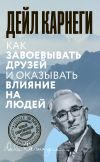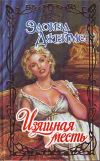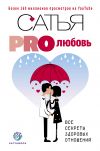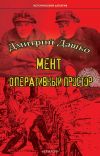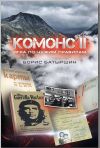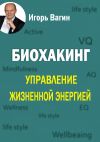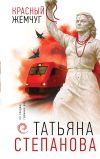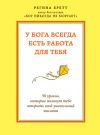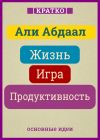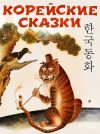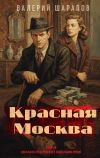Текст книги "Money, money circulation and credit"
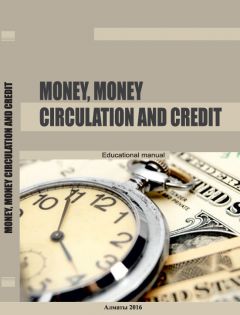
Автор книги: Коллектив авторов
Жанр: Учебная литература, Детские книги
сообщить о неприемлемом содержимом
Текущая страница: 1 (всего у книги 16 страниц) [доступный отрывок для чтения: 4 страниц]
M.T. Zholamanova, R.D. Doszhan, M.Zh. Daribaeva, A.V. Khamzaeva
Money, money circulation and credit
INTRODUCTION
The most dynamically developing sector of Kazakhstan’s financial system is banking sector. Any economics is based on objective economic laws, one of which is money circulation. Money cycle happens under the influence of financial institutes and first of all of banks which create the basis for money circulation and are linked with all the branches and sectors of the economic.
Banks provide sponsorship for different forms of entrepreneur– ships of producing and nonproducing spheres, managing sphere and supply budget with necessary funds. Either the banks carry a two-way traffic of money borrowed. Development of the State payment system, national currency stability, growth of economics and human wellbeing depend on condition and reliability of the banking system. It stipulates the necessity of qualification level quality improvement of the banking specialists.
This study guide consistently and intelligibly describes the basic questions of the course «Money. Credit. Banks» shows the basic theoretical and practical knowledges of banking, its organization, peculiarities and problems of development. In substantial plan this study guide satisfies the requirements of the State educational standard with a specialization in «Finance» and the program of the course «Money. Credit. Banks.»
The study guide reveals the meanings of money, money circulation, monetary system, the essence of credit functions, credit system, bank, banking, bank operations and the modern picture of Kazakhstan’s banking system, its structure and the basic directions of modernization and also the National Bank of Kazakhstan activity organization, its functions, essence and bank operations content are reviewed.
A special attention is paid to the questions of commercial banks’ activity organization, to the meanings of proprietary and borrowed resources.
The active operations of commercial banks are described in sufficient detail, as traditional (credit provision and transactions in securities) and far less the case in banking practice (leasing, forfeiting, factoring, trust and exchange operations). The meanings and classifications of banking risks, methods of their control are noticed.
Such approach allows to support the logic of the study guide exposition and to examine deeply the learned categories.
The application examples are exemplified from the banking activity experience. Illustrations (schemes, drawing, diagrams and tables) provide the easiest study of reviewed themes.
During this study guide publishing the National Bank of Kazakhstan’s law and regulations were used and the works of famous Kazakh and Russian economists Khamitov, G.S. Seitkassimov, Sh.R.Abdilmanova, S.Zh.Yntykbayeva, U.M. Iskakov, O.I. Lavrushina, Z.G. Shirinskaya, E.F. Zhukov, etc.
Chapter I. MONEY
Section 1. THE ESSENCE AND FUNCTIONS OF MONEY
1.1.1. The necessity and essence of moneyMoney is probably one of the greatest inventions of a human thought. It hasn’t any analogues in an animated nature. The whole structure of the modern economy is determined by the existence of money. The world economy has two basic theories of the money origin: rational and evolutional.
According to the rational theory money is the result of an agreement between people who invented them as a special instrument used for goods exchange.
The followers of this theory were such famous American economists as John Kenneth Galbraith, Campbell R. McConnell, Stanley L. Brue, Paul Anthony Samuelson, etc.
At present time when the modern types of money are in daily use (paper and electronic money) this theory looks quite reasonable and reliable. However it doesn’t discover any mystery in the money nature understanding. Though the rational theory followers themselves do not deny it.
The second theory was offered by Karl Marx. He affirmed that the money mystery will disappear if retrace their history «… from the simplest form of exchange to the brightest – monetary form».
Karl Marx linked the evolutional theory of money origin with the labor theory of value whereof follows that the cost of good measures by the quantity of abstract labor (i.e. labor in common, not exact) spent on its production.
Nowadays the majority of native scientists hold the evolutional theory of the money origin. There are several stages of the money evolution history:
The first stage is simple or elementary form of value.
The money origin date to 7th-8th millenium B.C.E. when the primitive people recognized some surpluses of the products which could be changed on the other required products, i.e. the exchange occurred at random: one product valued by another opposite. Marx wrote that this form is not so simple as could seem because it has two poles of value expression.
On the first pole is the good which expresses its value, which plays the active role (relative form of value); and on the second pole is the good which is used as a material for the first good value expression, which plays the passive role and is in an equivalent form. Thus, the relative and the equivalent forms are the two poles of the value expression.
The equivalent form of value has Эквивалентная форма стоимости some features:
The use value of the equivalent good serves as a form of the opposite good value expression;
The concrete labor spent on the equivalent good production serves as a form of the opposite abstract labor expression;
The private labor spent on the equivalent good production serves as a form of the opposite social labor expression.
The second stage is a total or expanded form of value.
The labor division with the human productive power development which expended the range of the got goods strongly resulted the requirement in the labor products exchange. Initially it was a simple exchange of one good on another which in small scale is still applied up to now and is known as «barter».
With the pastoralist and agricultural tribes’ development the first big social division of labor: people began to exchange many different social labor items and goods of relative form of value. The substantial fault of this form of value that the value of each good doesn’t get reasonable expression because of a wide range of the equivalent goods exsistance.
The third stage is a general form of value.
With an increase of the exchange operations volume and the range of exchanged goods the natural exchange on the principle of «the good for the good» became more and more problematic, led to the time loses during the searches of companions or to direct damages if perishable goods staled.
It can be assumed that some nebbish sellers at a risk of the goods loss or in despair exchanged them not on needed but on fast-moving in order to exchange it again on required. Thus, the fast-moving goods appeared which played the role of the first «commodity» money. Multiple usage of the fast-moving goods as an intermediary made them common twice. That is why the ratios in which they were exchanged on the other goods became stable. It let us say about the birth of «the equivalent goods» which confirms their role and functions of the commodity money.
Thanks to such money the process of purchase and sale separates in space and time and the commodity money themselves become the payment units which formulate the scale of prices in terms of the money units’ quantity paid for the purchased goods.
This process happens spontaneously beyond the control and desire of the concrete goods producer simultaneously to the market and its divisions’ birth. The predictability of the other subjects’ behavior increases, the indefiniteness decreases and as a result the individual expenses (charges) diminish together with the common.
In case of such local equivalent good elimination a random quotient of the two individual commodity producers who on their own risk and peril determine the cost of the concrete good passes. It’s becoming apparent that the cost of the good is not determined by the exchange but the cost itself (the specific type of labor put in the good production) and its volume determine the exchange relations in which the one good exchanged on the other.
Therefore we can see that the cost exists objectively and has a social character reflecting the social relations between the individual commodity producers. As a result the general form of value appears when one of the goods opposes the others as an equivalent.
The function of such common equivalent in different nations played different goods. As a rule they were the results of mass production playing the important role in their economics. The farmers had grains, the breeders had cattles, etc. The man who had such commodities could purchase the other products of labor to meet his own and his family needs.
Nevertheless we see that this common equivalent is local however because the other nations can deny the equivalent popular of the certain territory. With the goods production and exchange development the involvement of different nations into the common course of business happens. Thus the requirement for the common equivalent appears which could be popular among the farmers, breeders, hunters, etc.
The peculiarity of this form of the cost is that the role of the common equivalent of one good didn’t fix yet.
The fourth stage is the money form of value. The role of the common equivalent played gold (this stage was the most longstanding).
Further the search of the most convenient commodity money began which was accompanied by the refusal of nontransportable, wearing and variegated money. The money arena the ingots of copper, bronze then silver and gold enter. As such metal ingots lost the function of the good itself and became only the exchangeable equivalent it is allowable to argue that in their form the money appear in the sense that we used to understand this word today. Gradually the gold became the basic money stuff and was used for the different denomination coins strikes.
The way of the gold turning into the common equivalent – money was long and difficult. Actually we can suppose that eventually it happened to the middle of the XIXth century. Till this moment the money functions along with the gold performed the other precious metals, for example silver. The English monetary unit – pounds sterling – was the weighty pound of silver before.
How can we explain the fact that the gold precisely distinguished from the huge world of goods in the form of specific commodity – money? The gold has the range of unique features:
– homogeneous (the question is about the social value and social labor standard incorporated in the good, i.e. such equivalent should be absolutely homogeneous material);
– chemically inert (it doesn’t rust and remains unchanged almost forever in any environmental conditions);
– portable (there is a plenty large enough cost in relative little volume);
– divisible (any quantity of gold could be easily divided onto the smaller parts).
Strictly speaking theoretically we can distinguish some other materials and metals which also can satisfy the mentioned above conditions: silver, diamonds, platinum, etc.
However the objective process of the economic affairs development distinguished gold precisely. Silver couldn’t compete with gold because of its enough incidence in the earth crust, diamonds are unhomogeneous and couldn’t be divided, platinum found to be scorned by the Spaniards who called it «platina» and simply considered it the waste product of the gold mines.
With the gold usage situation the humanity faced the fact that this metal looses any other distinctive features except quantity. This particular relates this metal with the cost i.e. it looses all the differences between the heterogeneous types of labor. The gold represents itself in the form of «clot» that lacks substance of labor and quantity of socially needed time spent on the concrete good production.
But it should be noted that the gold in itself is not money but the money are gold. Thus we emphasize that the transformation of gold into money is not the natural but objectively social process which takes a lot of time.
With the money form of value appearance the goods receive a specific form of its cost existence in term of price (moreover it is a certain quantity of gold on which the good could be exchanged).
The transition from the subsistence to commercial farming and the exchange equivalence compliance determined the necessity of money appearance without which the mass exchange of goods based on the production specialization and the commodity producers’ material insulation is impossible.
The necessity of money appearance and usage is proved by the numerous and unsuccessful attempts to get away without them. This is borne out by Robert Owen’s idea bankruptcy in 1832 who tried to exchange the goods without money by means of goods evaluation on the basis of work time expenditures with usage of «labor bons». The Russian experience was either unsuccessful when in 1918 and 1921 the attempt of product exchange on the basis of natural coefficients was applied.
In about the XIIth century B.C.E. in China and in the VIIth century B.C.E. in the Mediterranean States – Lydia and Aegina – the metal coins appeared which were similar by weight, size and alloy composition.
The evolution of money didn’t stop on this. We can distinguish the next stages of the cost’s forms development: the stage of transition to paper and credit money and then their phasing-out from the turnover as a result of what the electronic money appear.
Besides the mentioned above points of view the other metal and nominal theories (nominalism) in economics regarding money and their nature were expressed.
The metal theory identifies money with precious metals. The theory proves that money should certainly have an inmost value in order to perform its functions. The most significant followers of this theory were the mercantilists who considered that gold and silver are the money by their nature and in virtue of their natural features. This approach reflected the situation truly in whole for the systems with the full-bodied (commodity) money.
The nominalism identifies money by the symbols of value (signs), conventional payment units. The most important is not the metal content of money but their symbolism (nominal). First of all money are considered as the product of state power and legal relations when their purchasing power is determined by the State. In whole the nominal theory of money reflects the true nature of money in the modern economic systems.
There are a lot of approaches of money determination. For example they could be rendered as a special good which plays role of a universal equivalent. This description remains actual for the long term though in the modem economic literature we can meet the other descriptions which usually indicate the other separate functions or peculiarities of money.
Money – metal and/or paper are the standards of value during the purchase and sale deal which play role of a universal equivalent, i.e. they express the value of all of the goods and are exchanged on any of them. (Shorter Economics Dictionary / under the editorship of A.N. Azriliyan – M., 2000).
Paul A. Samuelson writes that the flow of money is the source of life power, money provide the measuring rod of value. Besides money act as a medium of exchange and as standard unit of value or account. (Paul A. Samuelson «Economics» – M., 1992 – T. 1., – p. 40, p. 47).
According to the evolutional theory we can give the following description of money: Money are the historically developing economic category which expresses the definite economic relations between people in the process of production and distribution.
The essence of money consists of their features:
The universal immediate exchangeability – the possibility to exchange money onto any items of value.
The independent form of exchanged value which is not connected directly with realization of goods. The most significant cases of money usage in this form are credit accommodation, loan indebtedness redemption, financing of various manufacturing and nonmanufacturing costs, etc.
The materialization of the universal labor time is that labor spent on the goods production creates their value which could be changed by means of money.
1.1.2. The functions of moneyThe generation of money and their usage led to the great consequences. Money generation allowed to overcome the narrow bounds of mutual exchange of separate producers by means of goods and to create conditions for market generation in the operations of which many owners of different goods can take part. It provided the further development of production and improvement of its effectiveness.
The fact of money usage has a considerable importance because thanks to which appeared an opportunity to separate a nonrecurrent process of the goods’ mutual exchange (G-G) on two asynchronically implemented processes:
– the first consists of the good sale (G-M);
– the second consists of the required good purchase in another time and in another place (M-G).
Whereby the usage of money is not implied as a representative in the goods exchange processes. By contrast the money functioning obtains features of an independent process: the commodity producers can save money got from the realization of their goods till the moment of required good purchase. Hence the money savings appeared which could be used as for the goods purchasing and for money loaning and for debts repayment.
As a result of such processes the money flow acquired an independent meaning and separated from the goods flow.
The money functioning got more independence after the full-bodied money substitution which had their own cost onto the monetary units and after the following fixed gold content of the monetary units cancellation. After that the money appeared without their own intrinsic value what allowed to emit the monetary units according to the turnover necessities regardless the gold guarantee availability.
Thanks to cashless settlements generation including payments made on electronic devices the independence of money enhanced widely.
From the great antiquity we can follow the proofs that money performed three basic functions:
1) the standard of value;
2) the instrument of circulation;
3) the store of value.
The first money function is the function of value standard or in simple words of unified product worth measurer for sellers and buyers. In order to define the value of any good it should be compared with some quantity of money. However it must be borne in mind that money don’t make goods comparable because the last are the products of human labor and have homogeneous base of comparison – abstract labor.
The value of good expressed in money is the price of good. The price or monetary commodity form, ideal form with only an idea. Only the good with a relative form of value can have a price. Money do not have price, their cost couldn’t be defined by the money themselves. Instead of price money have a purchasing power expressed in an absolute quantity of goods which could be purchased on them.
After money invention people could find them usage only because they made one more great invention: all the goods could be compared to each other on the basis of their relative value and the value itself could be expressed by means of unified measurer – money. For the commodity-money operations different monetary units are used – tenge, dollars, marks, etc. These units measure and compare value of commodities. This function of accounting money is called standard of prices.
Money as a standard of value is homogeneous what is very important for counting and record keeping of implemented transactions. Expressing prices in dollars and cents people can compare and equalize the value of different goods immediately and freely.
If one good costs 20 tenge and the other 10 then the relative value of these goods is evident. Let’s say that our economy system doesn’t have a standard of value. In this case instead of definite price expression of each good in tenge we would form proportions of exchange of each good and service on each other good. For different goods and services the quantity of possible combinations is quite great and the good’s price determination becomes quite difficult.
Between money as a standard of value and money as a standard of prices the substantial differences exist. Money as a standard of value relates to all the other goods, it appears spontaneously, changes in accordance with the quantity of social labor spent on money commodity production. Money as a standard of prices is specified by the State and acts as fixed weighted quantity of metal changing with the cost of this metal.
Initially the weight content of the monetary unit coincided with the standard of prices what reflected in the names of some monetary units. Thus in past the English pounds sterling really and truly weighted one pound of silver. During the gold circulation the standard of prices supposed the monetary unit determination equal to the definite quantity of gold. In the USA in 1900 one dollar was equal to 1.50463 g. of pure gold but during the following devaluations of dollar the content of gold fell triply: in 1934 to 0.889 g., in December of 1971 to 0.818 g. and in February of1973 to 0.737 g. In the course of historical development the standard of prices separated from the weight content of monetary unit.
The Jamaican currency system introduced in 1976 till 1978 canceled an official price on gold and the gold parities as a result of which the official standard of prices became irrelevant. Gold was drove out of circulation by inconvertible credit money. At present time the official standard of prices changed on actual which forms spontaneously in the process of market exchange.
During the inconvertible credit money circulation the price confirms in the goods directly but not in gold. That’s why the price is the form of appearance of exchange ratio of the good to all the goods but not to the yellow metal specifically.
At present time paper money performs the function of standard of value without any gold guarantee but not less successfully then precious metals.
Money as an instrument of circulation. Money was born by trade and appeared as a technical mean which facilitates the goods’ exchange. Because without money only the direct exchange could be done when each of partner has a required good for another partner. But even there will be three people they can fail the deal if won’t use money. In other words money facilitate greatly the transition (or, as economists say, «circulation») of goods between the trade participants. Money serves as a universal language which helps sellers and buyers to come to agreement.
By the way that’s exactly why gold and silver became the main money commodities which contained the basis of the World’s leading countries’ monetary systems till the middle of the last century. These precious metals were admitted by the majority of nations all over the World as the most recognized monetary language which facilitated greatly as internal and international trade.
During the direct commodity exchange (G-G – good for good) the purchase and sale happened simultaneously in one place without any gaps. The commodity circulation (G1-M-G2) consists of two independent actions separated in time and place. Money plays the role of representative which allows to overpass the temporal and spatial gaps and to provide continuous process flow.
To money peculiarities as a mean of circulation first of all we can include the real money appearance in circulation and its evanescence in exchange. In this connection the token money – paper and credit – can perform the velocity function. Here the parallel countermotion of money and goods happens when money is tied to the goods movement. Historically this function generated token (paper) money.
The function of means of hoarding and savings. Money being the universal equivalent i.e. providing its owner the receipt of any good becomes a creation of social wealth. People feel an aspiration to save and reserve money. During the metal circulation this money function played the role of spontaneous regulator of the money turnover – spare money went to treasures and money shortage was filling up by them.
In the conditions of widened commodity reproduction the accumulation (saving and storing) of temporarily disposable monetary resources is a necessary condition of the capital turnover. The creation of money reserves flattens the inequalities and peculiarities of economic life. On a nationwide scale the gold reserve stock creation was required. In accordance with a demonetization of gold the amount of gold hoard gives evidence of the State’s richness and provides trust of residents and nonresidents to the national monetary unit.
Money can perform this function because it has «a perfect liquid– ity» of a nominal value.
Of course there is no use to save money in the countries with growing inflation because it devalues too fast. In consequence it looses its force of attraction in spite of high liquidity. If every day we can buy the lesser quantity of goods on dollar, ruble or tenge people wouldn’t like to save the value too long in a monetary form. There are known cases when in the conditions of hyperinflation the workers claim not for the monthly wages but for daily in order to spend their money before the prices will grow on the next day.
In those countries where the hyperinflation exists the national currency could be almost denied as a mean of hoarding and as a standard of value. In such circumstances an interesting situation appears: the national monetary units perform the functions of circulation and standard of prices but as a mean of hoarding the more stable foreign currency is used bought by the monetary assets holders.
The representative function interweaves and interlinks directly with the function of money as a mean of payment – payment of taxes, receipt and reimbursement of credit, payment of salaries, allowances, payment for utility services. Whereby a money circulation is not accompanied by a simultaneous goods transfer.
Initially this function was performed by the gold money and then by paper and credit. Historically the function of a mean of payment generated the credit money – a kind of token money. Money as a mean of payment has a specific scheme of transfer (G-UPI-G) which is not linked with the goods’ countermotion, i.e. money – urgent proof of indebtedness – money.
According to this scheme in the conditions of developed goods production the goods’ owners are linked to each other and a payment link opening will cause a range of payment failures: one tenge of the State debt will result 5-6 tenge of the other nonpayments.
In the conditions of a legal basis imperfection and an inflation growth in the middle of 90th of the last century the crisis of nonpayments accrued. Thus in Kazakhstan in the beginning of 1995 the nonpayments amounted 368.2 billion tenge, in 1996 – 533.9 billion, in 1998 – 637.9 billion. From 1998 some decrease occurred – 518.9 billion tenge and on 01.12.2002 – 148.2 billion tenge what was the result of the economic situation stabilization.
The usage of money as a mean of payment was described in detail in «The Russian Truth» (the XIth century): «Kunas are needed for payment of viras (penalties), debts and rezas (percents), obrok and render (for plough – ral and yard – smoke)». As the industrial society developed a mean of payment increasingly substituted a mean of circulation.
In the modem economic literature these two functions of money are usually united. It is hard to overshoot the significance of money as a mean of circulation because it allows avoiding a barter form of trade. An exchange of barter on a money trade separates the act of sales from the act of purchase.
If money exists the seller should find somebody who’d like to buy his good and then after money receipt he will buy everything that he’d like. An exchange of barter trade mechanism on a mechanism which uses money as a mean of circulation leads to a circulation cost improvement.
A money exchange demands rather less forces and time then barter. Decreasing the circulation costs money stimulates the development of specialization and trade. Money which performs well the function of a mean of circulation is gladly admitted by everyone. Money gives its owner some purchasing power which is very important advantage.
Money allows making a flexible chose of types and quantity of the purchased goods and either of places and time of shopping and the dealing partners. If some mean of circulation is used for the quite long time period thus its usage becomes stable and depends on the readiness and desire of population to use it.
These are some examples of money unacceptability. In 1970 the U.S. Treasury for two years issued the two dollar banknotes which were suspended from 1966. The Americans didn’t admit these banknotes. One of the reasons was that a two dollar banknote could be easily misrecognized as a one dollar. People obviously preferred the banknotes with a bigger nominal difference, for example between 1 and 5 dollars, but not 1 and 2. Besides many people found the two dollar banknotes unlucky.
In 1979 the U.S. Treasury tried to decrease the emission costs again by a one dollar coin issuing with an image of Susan B. Anthony. A great saving was planed because the coin’s service life is equal to 15 years in average, but the paper notes serve not more than 18 months. Either the U.S. Treasury supposed that the usage of one big coin is much more convenient then of some little. And again this effort was neglected by the population: first of all because this coin was similar to a quarter of a dollar coin by size and they could be easily misrecog– nised; secondly paper money is more preferable than coins.












